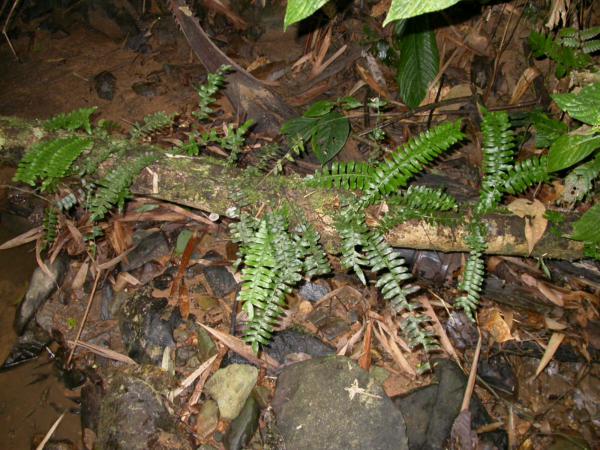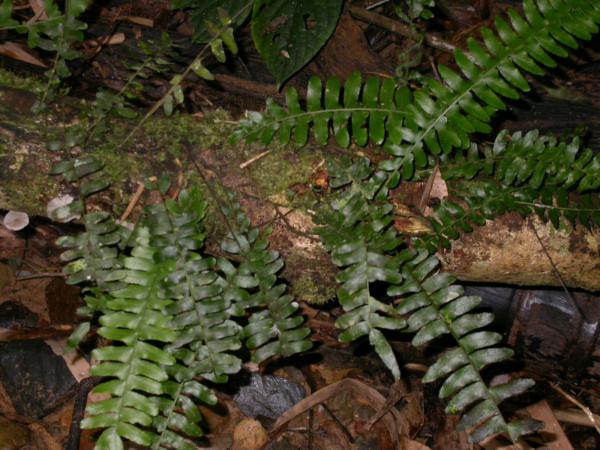
Arthropteris palisotii (Desv.) Alston
Family
Tectariaceae
Nomenclature
Arthropteris palisotii (Desv.) Alston, Bol. Soc. Brot. II. 30: 6. 1956; Holttum, Blumea 14: 226. 1966; Holttum, Rev. Fl. Malaya, ed. 2, 2: 634. 1968; Tagawa & K.Iwats., Fl. Thailand 3: 178, f. 13.3. 1985; Boonkerd & Pollawatn, Pterid. Thailand: 237. 2000. – Aspidium palisotii Desv., Ges. Naturf. Freunde Berlin Mag. Neuesten Entdeck. Gesammten Naturk. 5: 320. 1811.
Aspidium ramosum Beauv., Fl. Oware 2: 54, t. 91. 1811. – Nephrolepis ramosa (Beauv.) T.Moore, Index Filic.: 102. 1858; Bedd., Handb. Ferns Brit. India: 284, f. 145. 1883.
Arthropteris obliterata auct. non (R.Br.) J.Sm.: E.Smith, J. Siam Soc. Nat. Hist. Suppl. 8: 6. 1929; Tardieu & C.Chr., Fl. Indo-Chine 7(2): 287, f. 30, 3–4. 1940; Ching, Fl. Reipubl. Popularis Sin. 2: 318, pl. 28, f. 9–11. 1959.
Description
Epiphytic or lithophytic. Rhizome long creeping or climbing, irregularly branching, about 1.5 mm diam., bearing distant fronds; scales small, reniform with tails, 2 by 0.7 mm, dark brown, appressed. Stipes on distinct phyllopodia (a stipe base remaining as a scar after leaf-shedding) 2–3 mm high, 2–4 cm long, pubescent. Laminae linear-lanceolate, up to 40 by 7 cm, pinnate; middle pinnae larger, oblong, patent or ascending, round or moderately acute at apex, auricled at anterior and dimidiate at posterior bases, sessile, subentire or shallowly crenate at margin, up to 4 by 1 cm; rachis densely hairy; costa densely hairy above, sparsely beneath, texture softly papyraceous; veins more or less visible, forming acute angle with costa, forked. Sori in one row, submarginal or 1/3 way from margin of pinna to costa; indusia rotund-reniform smaller, usually shrinking in mature sori .
Distribution in Thailand
NORTHERN: Phrae, Tak; SOUTH-WESTERN: Phetchaburi; SOUTH-EASTERN: Chanthaburi; PENINSULAR: Surat Thani.
Wider Distribution
Old World tropics throughout, Africa to the Pacific.
Ecology
Epiphytic on tree trunks or on rocks in semi-shaded places.
Proposed IUCN Conservation Assessment
Least Concern (LC). This species is widespread and not under any known threats.
Habit
Habit
Site hosted by the Royal Botanic Garden Edinburgh. Content managed by Stuart Lindsay, Gardens by the Bay, Singapore and David Middleton, Singapore Botanic Gardens. Last updated 24 January 2012

